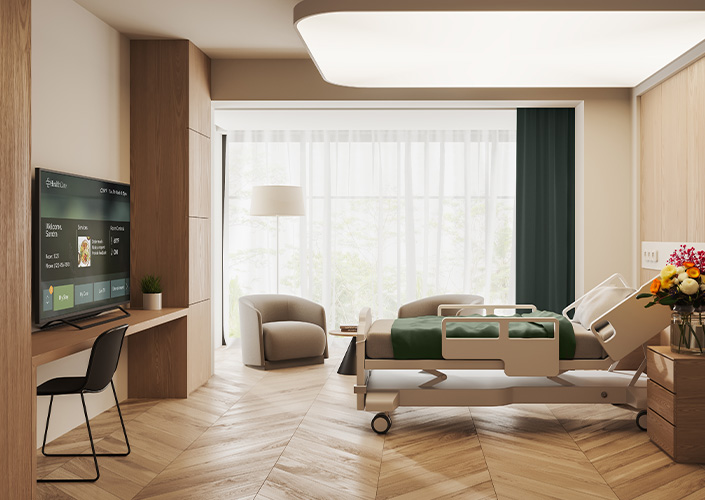HIStalk interview: Technology, hospitality, and entertainment in patient care

SONIFI Health General Manager Kelly Boyd sat down with Mr. H from HIStalk, a healthcare IT news and opinion website, to talk about the impact of technology and hospitality in patient care.
Interview excerpts:
You emphasize that healthcare is hospitality. Do you think that most hospitals see it that way and invest accordingly?
I do. We’ve doubled down on this, because in technology and healthcare tech, we can get so caught up in technology itself. The hospital’s mission is patient care, and at the root of that is compassion, comfort, and health outcomes. That essentially is the real meaning of hospitality.
At the end of the day, everything that we are doing is about the human experience. Creating an environment that is comfortable to the patient and that reduces anxiety has a direct impact on outcomes.
Does the hospitality aspect of a patient’s stay carry an outsized importance in their perceived satisfaction?
It’s interesting, because patients aren’t able to perceive different levels of true clinical care. They can attribute that “I survived that surgery, therefore it was good,” but they can’t really assess where that surgery ranked on the spectrum.
What they can definitively create is the perception about how they felt were treated and the hospitality side of the care that they received. People can articulate those things more than they can the true clinical aspects of healthcare.
Patients sometimes complain that technology, such as a physician charting in the EHR, is distracting. How do they see in-room technology and smart rooms?
There is no downside to the technology from the patient perception side. We have seen bumps in hospital patient experience scores simply from bringing in smart room technology. Patients translate high-tech, cutting-edge, state-of-the-art automation technology to better care. Whether that is a fair translation or not, it happens.
People are human, and investments on the hospitality side impact our perception of the quality of care that we are going to receive. Is my room nice? Is the furniture nice? Is the TV nice?
Anything that a hospital does to move to a smart room to enhance the environment impacts the patient’s perception of their quality of care, and to some extent, how they will perceive their outcomes.
You found that patients who use an interactive, in-room system are more likely to also use it to follow education recommendations. How can hospitals use that finding?
We found that the entertainment side of it draws people into the system. You want to watch that movie, listen to the music, engage with spiritual content, or whatever those entertainment pieces are that bring the patient into the system. The system is then designed to capitalize on the fact that the patient is engaged with the system.
We will strategically prompt the patient to engage in their care as well. That can be learning about their condition, how the recovery will go once they go home, things that they should watch for once they leave the hospital, and what they need to do to plan and prepare for their discharge.
We leverage the entertainment side as a way to pull the patient in, but once they’re in the system, you have all kinds of opportunities to put the important information in front of them.
What factors will be important for the company over the next few years?
We are tracking the movement away from inpatient new construction dollars to the outpatient side, with more short stay-focused, hospital-led home initiatives. Interoperability, security, data exchange, and seamless experiences across multiple facilities are big on our radar as well.
Stay connected
Get exclusive insights delivered to your inbox from our experts.

